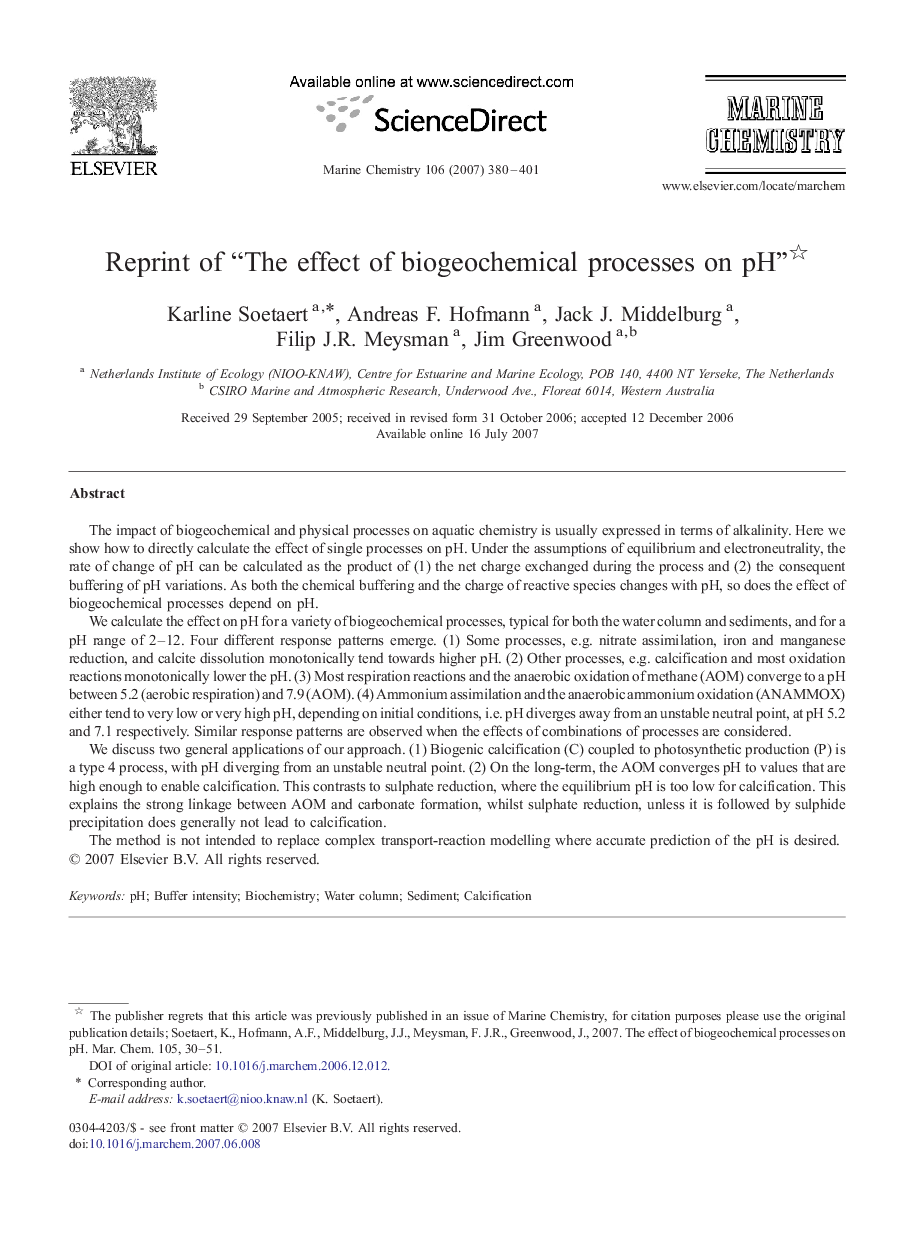| Article ID | Journal | Published Year | Pages | File Type |
|---|---|---|---|---|
| 1262602 | Marine Chemistry | 2007 | 22 Pages |
The impact of biogeochemical and physical processes on aquatic chemistry is usually expressed in terms of alkalinity. Here we show how to directly calculate the effect of single processes on pH. Under the assumptions of equilibrium and electroneutrality, the rate of change of pH can be calculated as the product of (1) the net charge exchanged during the process and (2) the consequent buffering of pH variations. As both the chemical buffering and the charge of reactive species changes with pH, so does the effect of biogeochemical processes depend on pH.We calculate the effect on pH for a variety of biogeochemical processes, typical for both the water column and sediments, and for a pH range of 2–12. Four different response patterns emerge. (1) Some processes, e.g. nitrate assimilation, iron and manganese reduction, and calcite dissolution monotonically tend towards higher pH. (2) Other processes, e.g. calcification and most oxidation reactions monotonically lower the pH. (3) Most respiration reactions and the anaerobic oxidation of methane (AOM) converge to a pH between 5.2 (aerobic respiration) and 7.9 (AOM). (4) Ammonium assimilation and the anaerobic ammonium oxidation (ANAMMOX) either tend to very low or very high pH, depending on initial conditions, i.e. pH diverges away from an unstable neutral point, at pH 5.2 and 7.1 respectively. Similar response patterns are observed when the effects of combinations of processes are considered.We discuss two general applications of our approach. (1) Biogenic calcification (C) coupled to photosynthetic production (P) is a type 4 process, with pH diverging from an unstable neutral point. (2) On the long-term, the AOM converges pH to values that are high enough to enable calcification. This contrasts to sulphate reduction, where the equilibrium pH is too low for calcification. This explains the strong linkage between AOM and carbonate formation, whilst sulphate reduction, unless it is followed by sulphide precipitation does generally not lead to calcification.The method is not intended to replace complex transport-reaction modelling where accurate prediction of the pH is desired.
